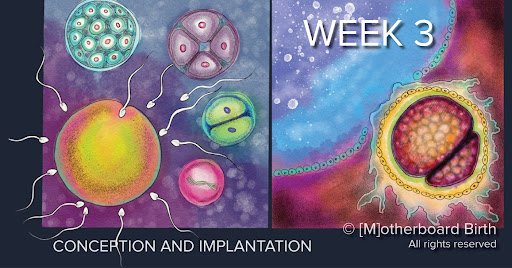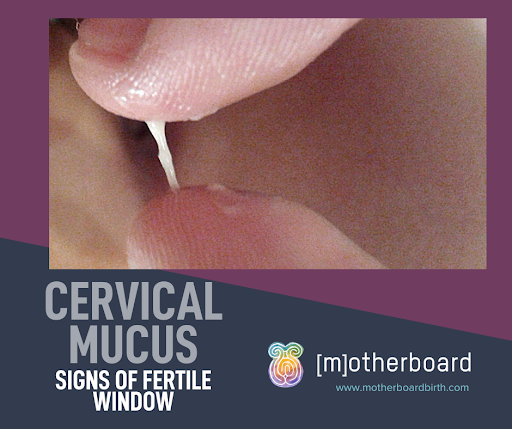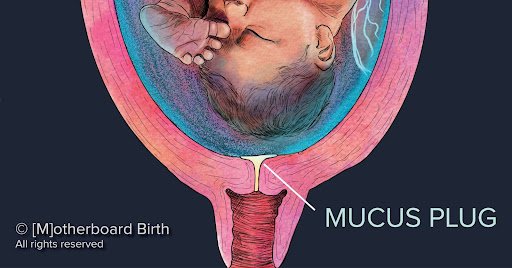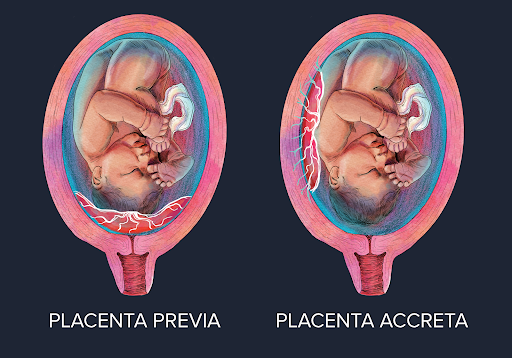The Ultimate Guide: Implantation Bleeding (2024)
While trying to conceive (TTC), the last thing you want to see is blood coming from your vagina. This can be super disheartening to think you’re back to cycle day one and that you have to try again another month.
Don’t psych yourself out right away though…there is a chance that the spotting you are thinking is your period could be “implantation bleeding.”
Implantation bleeding occurs right around the time you would expect your period to show up and could be an early sign of pregnancy before you even get a positive home pregnancy test!
Let’s chat about what implantation bleeding is, how to spot it, and how to differentiate implantation bleeding from a period.
What is implantation bleeding?
Once a sperm and an egg meet, an embryo is formed (aka a fertilized egg). This new embryo travels down the fallopian tube and embeds itself into the uterine lining. This process of the fertilized egg embedding itself into the uterus is defined as implantation.
Not only is it possible to experience some cramping during this process, but it can also cause a bit of spotting or light bleeding.
*If you’d like to read more about cramps associated with pregnancy, check out our blog post all about cramps during pregnancy.
Implantation bleeding can be added to the list of confusing things that happen while trying to conceive (TTC) and during pregnancy! Unfortunately, nothing in this realm is black and white.
Some folks will experience some cramping and light bleeding, while others will not have any symptoms of implantation. If you’re not looking for signs of implantation, it is very likely that you’ll miss them! Implantation bleeding happens right around the time you would expect your period, which is why some people mistake this spotting for the beginning of a period.
It is thought that implantation spotting happens simply due to some fragile blood vessels rupturing when the fertilized egg embeds itself into the uterus.
It’s important to remember that there are some pretty distinct differences between menstrual bleeding and implantation bleeding; we’ll chat about those differences a bit later.
What does implantation bleeding look like?
Keep in mind that not everyone will experience implantation bleeding. Sometimes, those fragile blood vessels may have ruptured during implantation, but you never even noticed. If you do not experience implantation bleeding, it does not mean you are not pregnant. In fact, according to the American Pregnancy Association, only about ⅓ of women will experience implantation bleeding.
Implantation bleeding is:
Typically brown or light pink in color
May be mixed with fertile cervical mucus
Does not contain blood clots or tissue
Not enough to fill a pad or tampon; most people only notice a small amount of implantation spotting on their underwear or when they wipe
How long does implantation bleeding last?
Implantation bleeding can last anywhere from a couple of hours to a few days. Even if you experience implantation bleeding for a few days, it should remain light pink or brown in color, whereas period blood, even if it starts light pink or brown, will progress to a deep red color.
The flow of implantation bleeding should not increase over the day(s) in the way that the flow of a period typically increases over the first couple of days.
Implantation bleeding may come and go throughout the day, whereas a period will just continue to increase in flow over the day(s).
Some people will only see implantation bleeding one time on some toilet tissue when they wipe. This is why implantation bleeding can easily be missed.
Others may have some visible spotting on their underwear, but it should never be enough to fill a pad or tampon if it is truly implantation bleeding.
Implantation bleeding versus a period
If you are someone who experiences implantation bleeding, it can be confusing. Implantation bleeding typically occurs around 10-14 days after ovulation, which is right around the same time most people get their period.
If you’re trying to conceive (TTC), you may be discouraged to see any blood at all, but keep in mind that implantation bleeding does happen.
How do you know if it's implantation bleeding or your period?
There are some distinct differences between a period and implantation bleeding:
Period
Bright red
Enough to fill pads/tampons throughout the day
Lasts more than 3 days
Cramping may be intense and last a few days
Implantation bleeding
Light pink/brown in color
Not enough to fill a pad/tampon
Lasts less than 3 days
Cramping is very mild, if there is any at all
The only true way to know if you’re experiencing implantation bleeding or period bleeding is, unfortunately, to wait it out!
Implantation symptoms
In addition to implantation bleeding, you may experience some other, subtle, symptoms related to implantation.
Implantation cramps may occur, but it may be hard to decipher implantation cramps from premenstrual syndrome (PMS) cramps. They may be implantation cramps if they’re pretty mild and don’t last very long. Some people also report implantation “cramps” to be one quick, sharp pain that lasts just a few seconds.
Cervical mucus during implantation
Your cervical mucus or discharge may be different during this time. To notice this, you’d have to be pretty in tune with your body. While trying to conceive, we do tend to be a little crazy about every little thing related to our vagina and uterus!
Our cervical mucus tends to follow a pattern throughout our menstrual cycles. Typically, ovulatory/fertile cervical mucus will be similar to egg white consistency; clear/white and very stretchy. Once you ovulate, your cervical mucus will become thick and sticky again before your next period. If you do end up pregnant, your cervical mucus may instead become white, milky, and abundant; this is to help form a mucus plug.
A mucus plug is a thick “chunk” of mucus that essentially plugs the opening of the cervix. The mucus plug acts as a barrier between the vagina and the uterus to help protect the unborn baby from any bacteria.
Toward the end of a pregnancy, you can actually lose pieces of your mucus plug. While this can sometimes precede labor, the mucus plug can also regenerate!
A change in cervical mucus may not happen until later in pregnancy; so it’s not a reliable indicator of implantation/early pregnancy, but it’s good to keep in mind.
Some people are not aware that cervical mucus/discharge changes throughout the month and that it coincides with where we are in our menstrual cycle. Learning about these changes can not only help you learn about when you’re most fertile, but early pregnancy discharge can be an indicator of pregnancy before you even get a positive home pregnancy test!
Some other signs/symptoms of implantation include:
Bloating
Sore breasts
Headache
Mood swings
Change in basal body temperature (BBT)
Of course, symptoms of implantation/early pregnancy can be similar to those of premenstrual syndrome (PMS) because they’re all related to those lovely hormones. As much as we want to know what’s going on in our bodies right away, since these symptoms can be so similar, it makes it pretty tough to decipher why they’re happening!
If you think your symptoms may be related to implantation, you’ll have to wait at least a few days to attempt to take a home pregnancy test for confirmation.
It’s hard to say exactly when a home pregnancy test would be reliable after implantation, but it’s always best to wait until a missed period, or around 14 days passed ovulation (DPO) for the most accurate results. It may take anywhere from four to twelve days for human chorionic gonadotropin (hCG), aka the pregnancy hormone, to rise high enough to become detectable on a home pregnancy test.
This wait can seem like forever when you’re trying to conceive (TTC), which is why learning about your body, your menstrual cycles, and your normal may give you a better idea about what’s going on in your body before a pregnancy test can tell you.
When to contact your doctor
Implantation bleeding may or may not happen and, if it does, it should be very light in color and will subside on its own.
If you experience any of the follow symptoms, they are more than likely not related to implantation and you should contact your healthcare provider:
Severe abdominal pain
Continuous pain
Heavy bleeding (more than normal for your period)
Bleeding that lasts longer than 5-7 days
Cramping accompanied by pain in the shoulder (this could be a sign of an ectopic pregnancy)
Reasons for bleeding between periods
If you’re someone who experiences bleeding/spotting between periods, or “breakthrough bleeding”, it can be pretty frustrating to try to figure out what’s going on in your body.
There are many different reasons why some people may experience bleeding between periods; we’ll touch on a few here:
Hormone imbalance
The primary hormones associated with menstrual cycles are progesterone and estrogen. Sometimes, introducing new outside factors (like starting hormonal birth control) can cause these hormones to become out of whack. When these hormones are disrupted, irregular bleeding can occur.
Some people have chronic hormone issues that are not necessarily related to outside factors. These people may have hormone disorders like thyroid issues or polycystic ovarian syndrome (PCOS). These women typically have irregular cycles, skip periods all together, and/or frequently experience breakthrough bleeding/spotting.
Pregnancy
Sometimes, bleeding in pregnancy can occur. While you should always seek medical attention for any kind of bleeding during pregnancy, it can be normal for some people.
Some pregnant folks have a sensitive cervix which can cause some spotting after sex, masturbation, or exercise. Others have pregnancy complications that may cause some bleeding during pregnancy. We go over some of these complications in detail in our “Cramps during pregnancy” blog post.
Some of these complications include:
An “incompetent cervix,” which is where the cervix doesn’t hold tight and firm under baby
Placental abruption, where the placenta starts to break away from the wall of the uterus
Placenta previa, where the placenta implants too close to the cervix
Preterm labor (early labor)
Cervical issues (like an infection or inflammation of the cervix)
Subchorionic hemorrhage happens when a small clot of blood pools between the amniotic sac and the uterus, accounts for 20% of all bleeding in pregnancy, and often doesn’t have any bad outcomes for you and baby
Bleeding and pain during a pregnancy should be addressed immediately because it could be a medical emergency, like an ectopic pregnancy.
An ectopic pregnancy is a pregnancy that occurs outside of the uterus, most commonly in a fallopian tube.
Infection
Some infections, like sexually transmitted infections (STIs) or pelvic inflammatory disease (PID), can cause breakthrough bleeding
Yeast infections can sometimes cause light bleeding/spotting due to irritation of the vaginal walls
Cancer
Although pretty rare, some cancers of the reproductive system can cause irregular bleeding
Other causes
If you’re someone who typically has regular periods and you’re now experiencing breakthrough bleeding, it may be something pretty simple like a lifestyle change. Creating new habits, like a new diet/exercise plan or a really stressful time of your life, can cause temporary changes in your menstrual cycle.
The Takeaway
Trying to conceive (TTC) can be a stressful time. We tend to over-analyze everything going on in our bodies during this time.
Once the fertile period is over, that “two week wait” can seem agonizing.
Sometimes, during this two week wait and probably right around the time of your expected period, you may experience some light bleeding.
So, is it implantation bleeding or just the start of your period? While the answer is not always black and white, there are some differences between implantation bleeding and a period.
Implantation will always be lighter in color and flow and it will subside after a few days at most.
It is important to remember that not everyone will experience implantation bleeding. You may still be pregnant and not experience any signs and symptoms of implantation at all.
The only way to know for sure is to wait for that positive pregnancy test!
As always, if you have any health concerns, you should reach out to your healthcare provider.
🤍 The Motherboard Team






